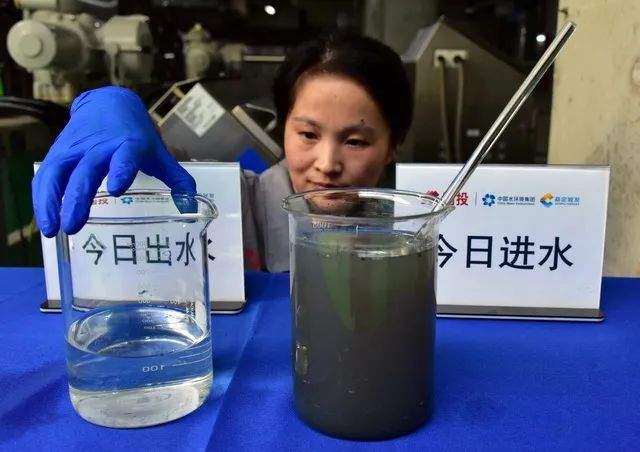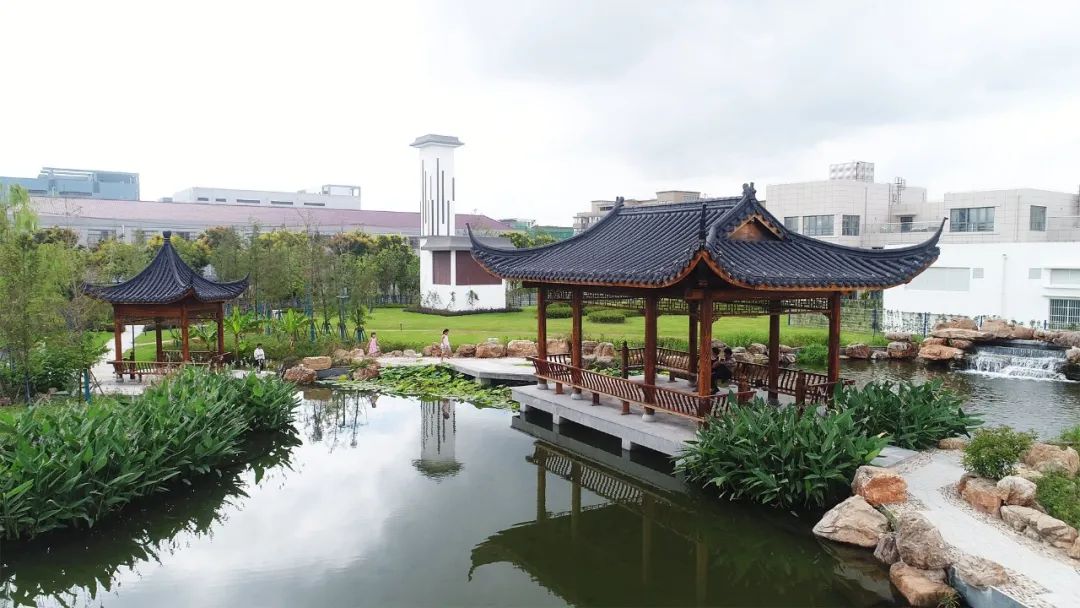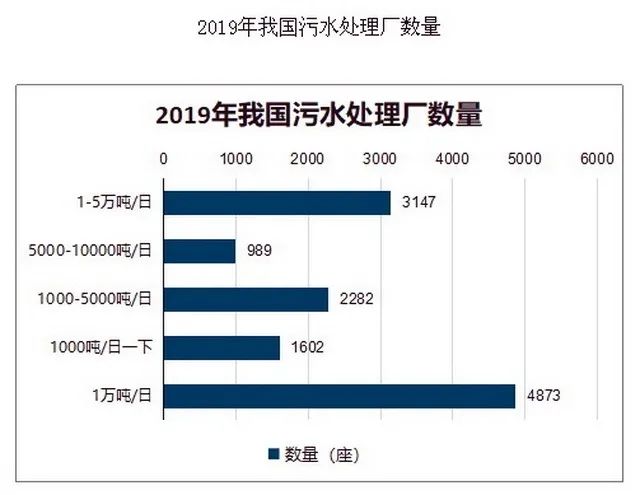【Media Focus】Underground WWTPs have become an industry trend
2020-08-26
Given that China is developing the 14th Five-Year Plan, Mao suggested that local governments should be encouraged to build underground WWTPs which feature “appropriate centralization, on-site treatment and local reuse”. The model increases effluent standards, improves water reclamation, and integrates facilities above and below the ground, maximizing the value of investments.
The interview took place in the office building of Shanghai Jiading Nanxiang Underground WWTP. Below the building are workshops, but there was no odor in the building at all.
Mao Rui said, “The WWTP is extraordinary . It has a daily capacity of 150,000 tons, serving an area of 36 square kilometers. What’s more, it carries many “firsts”: it is one of the first PPP projects in China, the first PPP project in Shanghai, and the first underground WWTP in Eastern China. It also sets a cap on effluent quality in Shanghai.”
Conventional WWTPs are noisy and odorous, and thus are opposed by nearby communities. This is called NIMBY: WWTPs can be built, but no in my backyard.
Mao Rui said that the original plan was building a conventional WWTP. Since the site was surrounded by a lot of office and residential buildings, the plan was strongly opposed by the public, and failed to go through the environmental impact assessment. To advance the project, the People’s Government of Jiading District organized a team composed of experts and citizen representatives to investigate WWTPs in other regions, and finally decided to build an underground WWTP to address NIMBY problems.

At Shanghai Jiading Nanxiang Underground WWTP, an employee is showing the reporter influent and effluent samples. Photo by Zhang Ke
Building an underground WWTP is like putting a conventional WWTP in a sealed box, and then burying the box underground, but it is difficult to complete the process. And such a WWTP imposes higher requirements on deodorization. Chang Yingfu, General Manager of Xiyuan Environmental Protection Engineering (Shanghai) Co., Ltd. told the reporter that Nanxiang Underground WWTP mainly relies on biological deodorization. Microorganisms are added to wastewater, and the deodorization rate is above 99.9%. The first floor underground had no foul smell, and below the glass floor, wastewater was flowing rapidly on the second floor underground.
At the outlet, an employee showed the reporter a bucket of reclaimed water. It was very close to tap water in quality, and was colorless and odorless.
“The effluent can meet Surface Water Grade IV standard, and is used to replenish the Yunzao River and irrigate the park above. The heating value of sludge reaches 1,500-2,000 kcal per kilogram, and thus can be a source of electricity,” said the employee.
Underground WWTPs are an emerging urban wastewater treatment model. On January 1 this year, China’s first underground WWTP standard — Technical Guide for Urban Underground WWTPs came into effect.
Data show that as of the end of January 2020, a total of 10,113 WWTPs have obtained the wastewater discharge permit, of which more than 98% are above-ground and less than 2% are built underground. This indicates a great potential for underground WWTPs.
It is estimated that although underground WWTPs are more costly compared to conventional ones, since land is saved, and the above area allows multiple functions, they can actually create higher comprehensive benefits. For example, the six underground WWTPs in Dali saves 160 mu (approx. 10.72 ha.) of land, and Chengdu Tianfu New Area No. 1 Underground WWTP saves 360 mu (approx. 24.12 ha.) of land, while creating a sports park and 496 public parking spaces for West China Tianfu Hospital and other major public facilities.

Garden-style Shanghai Jiading Nanxiang Underground WWTP
Mao Rui told the reporter that underground WWTPs had been recognized by many governments and local people. For example, in May 2020, Zhejiang issued guidelines to promote the construction of underground WWTPs across the province. In principle, for developed cities and counties short of land, urban WWTPs with a daily capacity of 50,000 tons or above should be built underground. Besides, Guangdong is developing local standards on underground WWTP deodorization technology.At present, China’s water environment governance industry is still vulnerable in many aspects such as industrial concentration, business models, resource efficiency, and NIMBY conflict avoidance. And there is still a wide gap between actual and required water governance and land-use efficiencies. 70%-80% existing WWTPs need to be renovated to improve effluent quality.

Number of WWTPs in 2019 Data source: WWW.chyxx.com
According to Mao Rui and his colleagues, the relocation of many WWTPs in downtown areas faces tough challenges. A typical one is that the relocation distance is always above 20 kilometers, which indicates a high pipelining cost far exceeding the construct cost of underground WWTPs. Therefore, underground WWTPs which feature “appropriate centralization, on-site treatment and local reuse” are an ideal choice. Besides, an underground WWTP, which integrates facilities above and below the ground, can expand into an urban water ecological complex. Mao Rui and other insiders suggested new land policy that allows mixed land use to give multiple functions to one parcel or one building. In this way, the ecological, social and economic benefits of underground WWTPs can be maximized.
Link to original text: https:m.yicai.com/news/100741839.html?from=singlemessage
 中国水环境集团
中国水环境集团









